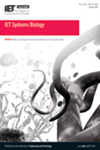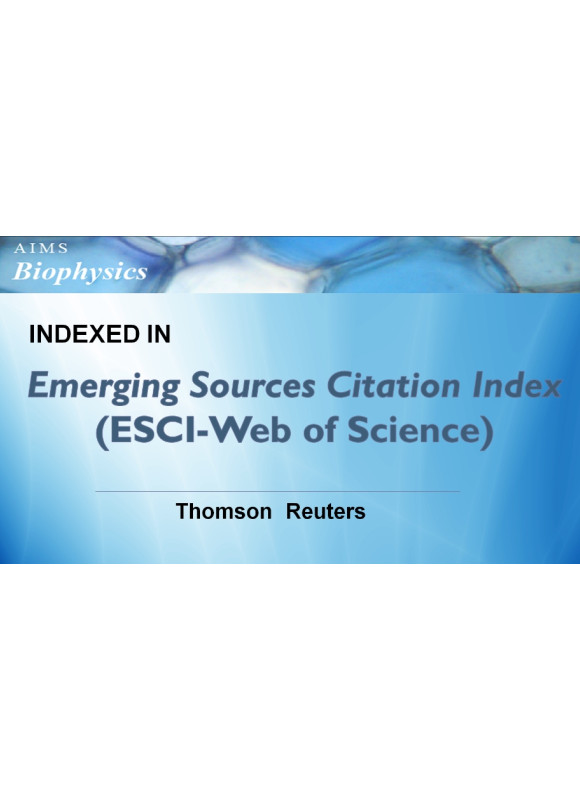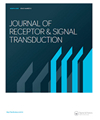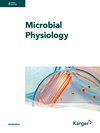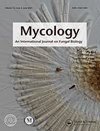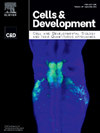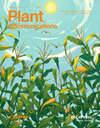Iet Systems BiologySCIE
國際簡稱:IET SYST BIOL 參考譯名:系統生物學
- 基本信息:
- ISSN:1751-8849
- E-ISSN:1751-8857
- 是否OA:開放
- 是否預警:否
- TOP期刊:否
- 出版信息:
- 出版地區:ENGLAND
- 出版商:Wiley
- 出版語言:English
- 出版周期:Bi-monthly
- 出版年份:2007
- 研究方向:生物-數學與計算生物學
- 評價信息:
- 影響因子:1.9
- H-index:43
- CiteScore指數:4.2
- SJR指數:0.365
- SNIP指數:0.605
- 發文數據:
- Gold OA文章占比:79.03%
- 研究類文章占比:100.00%
- 年發文量:27
- 自引率:0.0434...
- 開源占比:0.3896
- 出版撤稿占比:0
- 出版國人文章占比:0.17
- OA被引用占比:0.3945...
英文簡介Iet Systems Biology期刊介紹
IET Systems Biology covers intra- and inter-cellular dynamics, using systems- and signal-oriented approaches. Papers that analyse genomic data in order to identify variables and basic relationships between them are considered if the results provide a basis for mathematical modelling and simulation of cellular dynamics. Manuscripts on molecular and cell biological studies are encouraged if the aim is a systems approach to dynamic interactions within and between cells.
The scope includes the following topics:
Genomics, transcriptomics, proteomics, metabolomics, cells, tissue and the physiome; molecular and cellular interaction, gene, cell and protein function; networks and pathways; metabolism and cell signalling; dynamics, regulation and control; systems, signals, and information; experimental data analysis; mathematical modelling, simulation and theoretical analysis; biological modelling, simulation, prediction and control; methodologies, databases, tools and algorithms for modelling and simulation; modelling, analysis and control of biological networks; synthetic biology and bioengineering based on systems biology.
期刊簡介Iet Systems Biology期刊介紹
《Iet Systems Biology》自2007出版以來,是一本生物學優秀雜志。致力于發表原創科學研究結果,并為生物學各個領域的原創研究提供一個展示平臺,以促進生物學領域的的進步。該刊鼓勵先進的、清晰的闡述,從廣泛的視角提供當前感興趣的研究主題的新見解,或審查多年來某個重要領域的所有重要發展。該期刊特色在于及時報道生物學領域的最新進展和新發現新突破等。該刊近一年未被列入預警期刊名單,目前已被權威數據庫SCIE收錄,得到了廣泛的認可。
該期刊投稿重要關注點:
Cite Score數據(2024年最新版)Iet Systems Biology Cite Score數據
- CiteScore:4.2
- SJR:0.365
- SNIP:0.605
| 學科類別 | 分區 | 排名 | 百分位 |
| 大類:Mathematics 小類:Modeling and Simulation | Q2 | 100 / 324 |
69% |
| 大類:Mathematics 小類:Biotechnology | Q3 | 160 / 311 |
48% |
| 大類:Mathematics 小類:Genetics | Q3 | 201 / 347 |
42% |
| 大類:Mathematics 小類:Molecular Biology | Q3 | 282 / 410 |
31% |
| 大類:Mathematics 小類:Cell Biology | Q3 | 208 / 285 |
27% |
CiteScore 是由Elsevier(愛思唯爾)推出的另一種評價期刊影響力的文獻計量指標。反映出一家期刊近期發表論文的年篇均引用次數。CiteScore以Scopus數據庫中收集的引文為基礎,針對的是前四年發表的論文的引文。CiteScore的意義在于,它可以為學術界提供一種新的、更全面、更客觀地評價期刊影響力的方法,而不僅僅是通過影響因子(IF)這一單一指標來評價。
中科院SCI分區Iet Systems Biology 中科院分區
| 大類學科 | 分區 | 小類學科 | 分區 |
| 生物學 | 4區 | CELL BIOLOGY 細胞生物學 MATHEMATICAL & COMPUTATIONAL BIOLOGY 數學與計算生物學 | 4區 4區 |
中科院分區表 是以客觀數據為基礎,運用科學計量學方法對國際、國內學術期刊依據影響力進行等級劃分的期刊評價標準。它為我國科研、教育機構的管理人員、科研工作者提供了一份評價國際學術期刊影響力的參考數據,得到了全國各地高校、科研機構的廣泛認可。
中科院分區表 將所有期刊按照一定指標劃分為1區、2區、3區、4區四個層次,類似于“優、良、及格”等。最開始,這個分區只是為了方便圖書管理及圖書情報領域的研究和期刊評估。之后中科院分區逐步發展成為了一種評價學術期刊質量的重要工具。
JCR分區Iet Systems Biology JCR分區
| 按JIF指標學科分區 | 收錄子集 | 分區 | 排名 | 百分位 |
| 學科:CELL BIOLOGY | SCIE | Q4 | 176 / 205 |
14.4% |
| 學科:MATHEMATICAL & COMPUTATIONAL BIOLOGY | SCIE | Q3 | 36 / 65 |
45.4% |
| 按JCI指標學科分區 | 收錄子集 | 分區 | 排名 | 百分位 |
| 學科:CELL BIOLOGY | SCIE | Q4 | 162 / 205 |
21.22% |
| 學科:MATHEMATICAL & COMPUTATIONAL BIOLOGY | SCIE | Q4 | 53 / 65 |
19.23% |
JCR分區的優勢在于它可以幫助讀者對學術文獻質量進行評估。不同學科的文章引用量可能存在較大的差異,此時單獨依靠影響因子(IF)評價期刊的質量可能是存在一定問題的。因此,JCR將期刊按照學科門類和影響因子分為不同的分區,這樣讀者可以根據自己的研究領域和需求選擇合適的期刊。
發文數據
- 國家/地區數量
- India41
- CHINA MAINLAND26
- Iran19
- Pakistan12
- USA11
- Turkey8
- Australia4
- Romania4
- Italy3
- Saudi Arabia3
本刊中國學者近年發表論文
-
1、Multiscale modeling biological systems.
Author: Liu ZP, Chen L.
Journal: IET Syst Biol. 2016 Feb;10(1):1. doi: 10.1049/iet-syb.2016.0002. No abstract available.
-
2、Crosstalk between pathways enhances the controllability of signalling networks.
Author: Wang D, Jin S, Zou X.
Journal: IET Syst Biol. 2016 Feb;10(1):2-9. doi: 10.1049/iet-syb.2014.0061.
-
3、Kinetic model of metabolic network for xiamenmycin biosynthetic optimisation.
Author: Xu MJ, Chen YC, Xu J, Ao P, Zhu XM.
Journal: IET Syst Biol. 2016 Feb;10(1):17-22. doi: 10.1049/iet-syb.2014.0054.
-
4、Knowledge-based three-body potential for transcription factor binding site prediction.
Author: Qin W, Zhao G, Carson M, Jia C, Lu H.
Journal: IET Syst Biol. 2016 Feb;10(1):23-9. doi: 10.1049/iet-syb.2014.0066.
-
5、Extended particle swarm optimisation method for folding protein on triangular lattice.
Author: Guo Y, Wu Z, Wang Y, Wang Y.
Journal: IET Syst Biol. 2016 Feb;10(1):30-3. doi: 10.1049/iet-syb.2015.0059.
-
6、Sparse electrocardiogram signals recovery based on solving a row echelon-like form of system.
Author: Cai P, Wang G, Yu S, Zhang H, Ding S, Wu Z.
Journal: IET Syst Biol. 2016 Feb;10(1):34-40. doi: 10.1049/iet-syb.2015.0002.
-
7、Detecting small attractors of large Boolean networks by function-reduction-based strategy.
Author: Zheng Q, Shen L, Shang X, Liu W.
Journal: IET Syst Biol. 2016 Apr;10(2):49-56. doi: 10.1049/iet-syb.2015.0027.
-
8、Graph theory and stability analysis of protein complex interaction networks.
Author: Huang CH, Chen TH, Ng KL.
Journal: IET Syst Biol. 2016 Apr;10(2):64-75. doi: 10.1049/iet-syb.2015.0007.
投稿常見問題
-
請問這本期刊屬于什么級別呢?可用于職稱評定嗎?
一般刊物只分省級、部級、核心,期刊本身是沒有幾類劃分的,具體是幾類或者幾級,您可以對照單位的分類文件確認一下。Iet Systems Biology雜志是由Wiley出版的一本SCIE,可用于職稱評定。
-
你們能夠提供哪些核心期刊的咨詢服務?
大多數核心期刊我們都是可以提供咨詢服務的。目前核心期刊主要分為以下幾類:1.國內核心:按照權威度排序,社科類:南大核心>南大擴展>北大核心>科技核心 按照權威度排序。工科類:CSCD C庫>CSCD E庫(相當于CSCD擴展)>北大核心>科技核心。2.國外核心(全英文):按照權威度排序為:SSCI=SCI>EI>ISTP=CPCI。
-
想快速發表,可以加急嗎?
為了確保您的職稱評定順利進行,我們建議提前半年到一年開始準備,這樣能夠保證有充足的時間來處理所有相關事宜。如果客戶需要加急服務,我們會與雜志社進行溝通,以確定是否可以提供加急服務。請注意,如果確認可以加急,可能會收取一定的加急費用。
-
你們提供的服務可以確保稿件被發表嗎?
期刊編輯會綜合考慮多個因素,如發表范圍、學術價值和原創性等,對稿件進行綜合評估。盡管任何機構均無法保證每篇稿件都會被發表,但我們可以用專業知識和豐富經驗,協助您理解并遵循期刊的發表要求,從而提高您的稿件被發表的機率。
-
請問期刊發表的費用如何?
期刊發表的費用因期刊不同而異。根據您的需求,我們會為您推薦性價比最高的期刊,并提供專業的期刊供您選擇。一般來說,只要符合職稱要求,大多數作者都會選擇性價比最高的期刊作為意向期刊進行重點咨詢。我們會為您提供詳細的期刊信息和費用說明,以確保您能夠做出明智的選擇。
-
如果稿件被拒,未能成功發表,費用是否可以退還?
一般來說,我們推薦的期刊和您的專業方向、文章情況都是匹配的,極少出現稿件被拒的情況。如果稿件被拒,期刊編輯會提供詳細的拒稿信和建議,以幫助您了解拒稿原因并改進您的稿件。關于退款政策,具體情況可能因期刊不同而異,請您咨詢我們的工作人員以獲取詳細信息。
相關期刊推薦
熱門期刊推薦
-
Computational And Structural Biotechnology Journal
中科院 2區 JCR Q2
-
Briefings In Bioinformatics
中科院 2區 JCR Q1
-
Microbiological Research
中科院 1區 JCR Q1
-
Cell Communication And Signaling
中科院 2區 JCR Q1
-
Plant Physiology
中科院 1區 JCR Q1
-
Faseb Journal
中科院 2區 JCR Q1
-
Journal Of Molecular Cell Biology
中科院 2區 JCR Q2
-
Zoological Research
中科院 1區 JCR Q1
